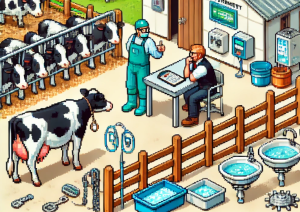
Building the Health Workforce America Deserves
Across the United States, patients are struggling to find basic care. Families drive hours for dental appointments. Rural hospitals are closing. Nurses are burning out. And despite spending nearly twice as much per person on health care as other wealthy nations, America faces a dire shortage of doctors, nurses, and dentists.
The Health Resources and Services Administration (HRSA) projects a shortfall of more than 187,000 physicians within 12 years and over 200,000 nurses by 2037. Add to that the 60 million people living in dental-care deserts, and it’s clear: the health workforce pipeline is collapsing just when the nation needs it most.
Introducing the Health Care Workforce Expansion Act
On September 30, 2025, Senator Bernie Sanders (I-VT) and Senator Jeff Merkley (D-OR) introduced the Health Care Workforce Expansion Act of 2025—a bold, comprehensive plan to rebuild America’s health workforce from the ground up.
The bill tackles the two biggest barriers that keep talented people out of health care careers: sky-high tuition and limited training capacity. It also targets workforce gaps in primary care, psychiatry, and rural practice, where shortages are most severe.
1. Tuition-Free Pathways for Health Professionals
The bill creates full-tuition grants for medical, dental, and nursing students at accredited nonprofit schools:
- Medical students receive free tuition if they commit to practicing primary care for 10 years.
- Dental students receive free tuition if they agree to practice general dentistry in rural communities for 10 years.
- Nursing students receive free tuition to meet the critical shortage of nurses nationwide.
These provisions relieve new professionals of the crushing debt that now averages $200,000 for doctors and $300,000 for dentists—debt that keeps many from serving where they’re most needed.
2. Expanding Enrollment and Faculty Capacity
The bill invests over $5 billion in health-professional schools to modernize classrooms and labs, hire and retain faculty, and expand enrollment by 2030:
- $2.8 billion → Medical schools (+100 % enrollment increase)
- $1.98 billion → Nursing schools (+60 % increase)
- $615 million → Dental schools (+40 % increase)The-Health-Care-Workforce-Expan…
3. More Residency and Community Training Slots
The legislation adds 50,000 new Medicare Graduate Medical Education (GME) residency slots, reserving 30 % for primary care and 15 % for psychiatry, and invests $30 billion in Teaching Health Centers to create 15,000 new community-based residencies. These measures ensure graduates can complete training close to underserved patients.
4. Incentives for Rural Practice
To immediately relieve rural shortages, the bill provides $20,000 relocation grants for doctors, dentists, and nurses who move to and serve in rural communities.
5. Accountability and Service Commitments
Grantees commit to a decade of service in primary care or rural settings. If they leave early, their grant converts to a capped low-interest federal loan. This keeps the program equitable while ensuring taxpayer dollars truly strengthen public health infrastructure
Why This Matters for Public Health Practitioners
The Health Care Workforce Expansion Act isn’t just about education—it’s about health equity. By removing financial barriers and building pipelines into underserved areas, the bill:
- Reduces burnout by increasing staffing and improving working conditions for nurses and clinicians.
- Expands access to primary care, mental health, and dental services in rural and urban health-professional shortage areas.
- Strengthens public health systems by aligning medical education with prevention, community health, and population-level impact.
- Advances diversity through grants that prioritize recruitment of students from disadvantaged, rural, and underrepresented backgrounds
In short, this legislation would finally let the U.S. train the workforce it needs to protect the nation’s health.
The Investment We Can Afford
At roughly $27.6 billion per year over 10 years, the plan’s total cost—$276 billion—is a fraction of what the country spends on tax breaks for corporations or military contractors. Investing in health care workers is one of the smartest, most fiscally responsible ways to improve life expectancy, lower emergency-room costs, and revitalize rural America.
A Call to Action: Support the Health Care Workforce Expansion Act
The Health Care Workforce Expansion Act of 2025 is backed by the American Academy of Family Physicians, American Nurses Association, American Medical Student Association, American Association of Colleges of Nursing, AFSCME, and the National Rural Health Association, among many others.
But for this bill to become law, it needs your voice. If you believe that every community deserves access to qualified doctors, nurses, and dentists—without forcing the next generation into lifelong debt—now is the time to act.
📞 Contact your senators and representatives today.
Tell them to support the Health Care Workforce Expansion Act of 2025.
Because strengthening the health workforce means strengthening the health of America.



